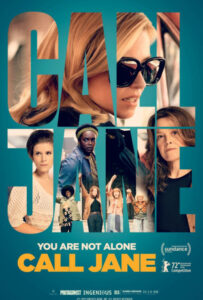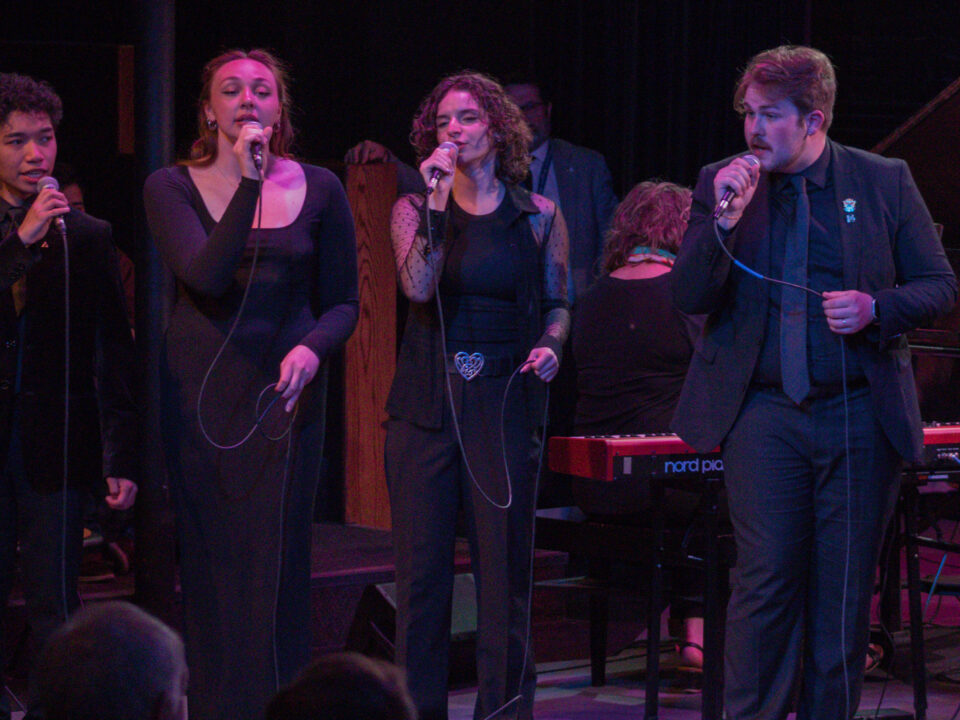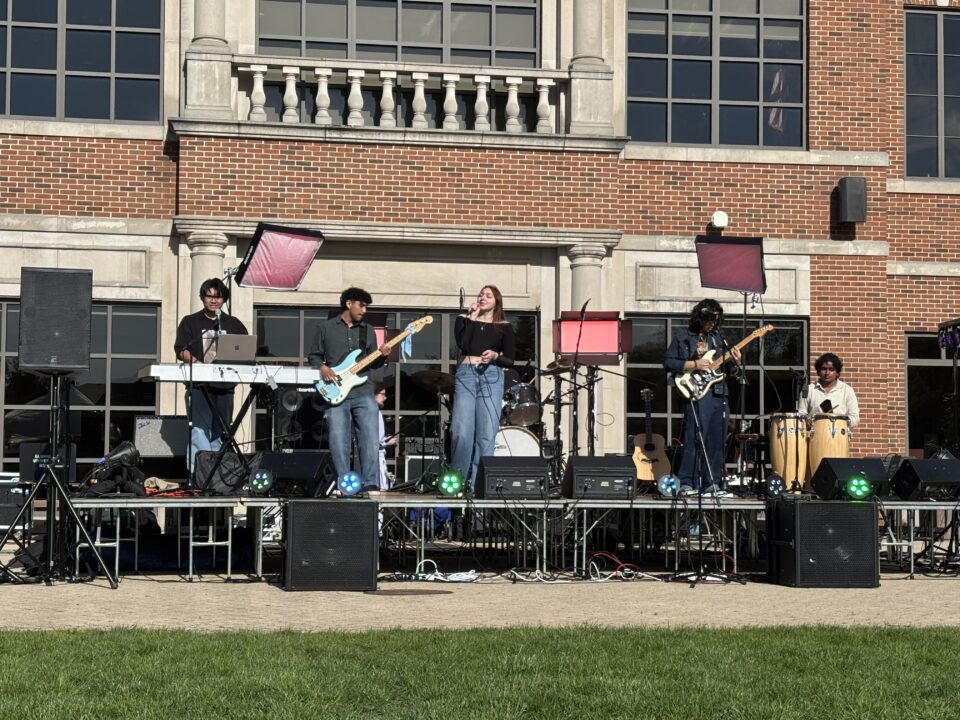“Nobody’s Jane. We’re all Jane.”
3.5 stars out of 5
Spoilers ahead.
When a pregnant woman learns that her unborn child poses a risk to her life, she seeks medical assistance, only to be turned down until coming across an activist group known as the “Janes,” who provide women with safe abortions.
“Call Jane” was released on Oct. 28, and was a powerful and topical film surrounding issues that are more prevalent than ever.
This film follows the “Janes,” who were a real group founded in Chicago by Heather Booth. Booth, a student at the University of Chicago, got a call from a friend’s sister who was pregnant and seeking an abortion.
Booth reached out to the Medical Committee for Human Rights and the organization referred her to T.R.M. Howard, who was a civil rights leader and surgeon who secretly performed abortions.
Soon after helping her friend’s sister, more women began calling in search of help. Booth rallied with other activists and together they helped these women.
From there, the group that would call themselves the “Janes” was born. Over there five years in existence, the group provided an estimated 11,000 abortions and out of those 11,000 women, not a single death was reported.
Typically, I don’t really enjoy biopics; I tend to wish I’d just watched a documentary rather than the dramatic retelling.
However, I found myself really enjoying this film and felt it did a good job of creating a story while respecting what really happened. I was surprised to learn how accurate the story was to the real organization.
One of the biggest allures was the performances, which I thought were really outstanding, especially Elizabeth Banks who played Joy. I learned that in preparation for this performance, she actually learned how to perform an

Internet Photo
abortion procedure.
Banks also made a statement about her own personal experiences with receiving medical care and explained, “There was a lot of sense memory in the acting for me. It’s very intimate, what women are put through.”
She went on to explain the experience of having her ovarian cysts removed by a male doctor.
In an interview, Banks stated “He treated me like, Can’t you just get it together? So, I forced myself through this pain, through this procedure with this asshole technician in this room with no understanding of what [I’m feeling]. And then I went to my car and I bawled my fucking eyes out.”
This is something I’ve experienced and something I’m sure many other women have too. You felt right there with her on-screen and connected to her, especially in her more intimate scenes.
One of those scenes in specific, Joy’s abortion scene, was shown in a very powerful manner. They cut at the perfect moments to keep the focus off the procedure itself and instead on the women and their reactions.
It showcases abortion as a medical procedure and as something that, when done safely and properly, is beneficial and necessary. The movie reinforces this idea throughout and never tries to demonize or sugarcoat abortions.
I also really loved this film visually. The lighting differences between the Jane’s abortion clinic, which is much dimmer, versus the much brighter outside world help to reinforce the risks they’re taking.
However, although the lighting in the clinic is dim, it is also very warm. This is in direct contrast to the first abortion clinic shown in the film, and also showcases the hope and safety being provided.
The colors in the set design reflect this as well. There are a lot more earth tones, yellows, and reds throughout the clinic versus the cooler greens and blues showcased in outside areas, such as Joy’s home.
I also thoroughly enjoyed the costumes within the film, but I think this stems from my love of ‘60s and ‘70’s fashion. Also featured within this film was a stellar soundtrack.
A major flaw within the film was the lack of representation seen on screen. However, this film did touch on the fact that black women were often some of the last to receive abortions, as the costs were often higher than their incomes could afford.
The only black character in this film was played by Wunmi Mosaku, who also pointed out the fact that she was the only black woman in a room full of white women.
While I was glad that they made a point to mention this and call attention to it rather than just gloss over it, this film was still told from a white women’s perspective, and tells a very limited story about an issue that affects all women.
Another fault within the film was the pacing, overall it felt a bit stagnant. The movie definitely has its dramatic moments and times of tension; however, they felt more like dips rather than peeks.
One moment in particular, which I felt was the climax, was when Joy performs her first abortion, thus opening the doors for more women to receive one. Though it was a point of high emotion, it did come off a bit flat and glossed over.
Even when they’re celebrating the Roe V. Wade decision at the end, it felt anticlimactic. Despite this, I still felt it was a really important movie and one that should be on your watchlist.
This was a heartfelt and surprisingly uplifting story about an issue that is something women are once again having to fight for, as Roe V. Wade was recently overturned.
As of now, 18 states have banned abortion in some capacity, and with the midterm elections, the threat of ban looms over every other state as well.
Movies like this have the power to reach people who may not see abortion as a choice women need to be able to make for themselves, and can hopefully get those people to see its importance, or at the very least accept its necessity.


